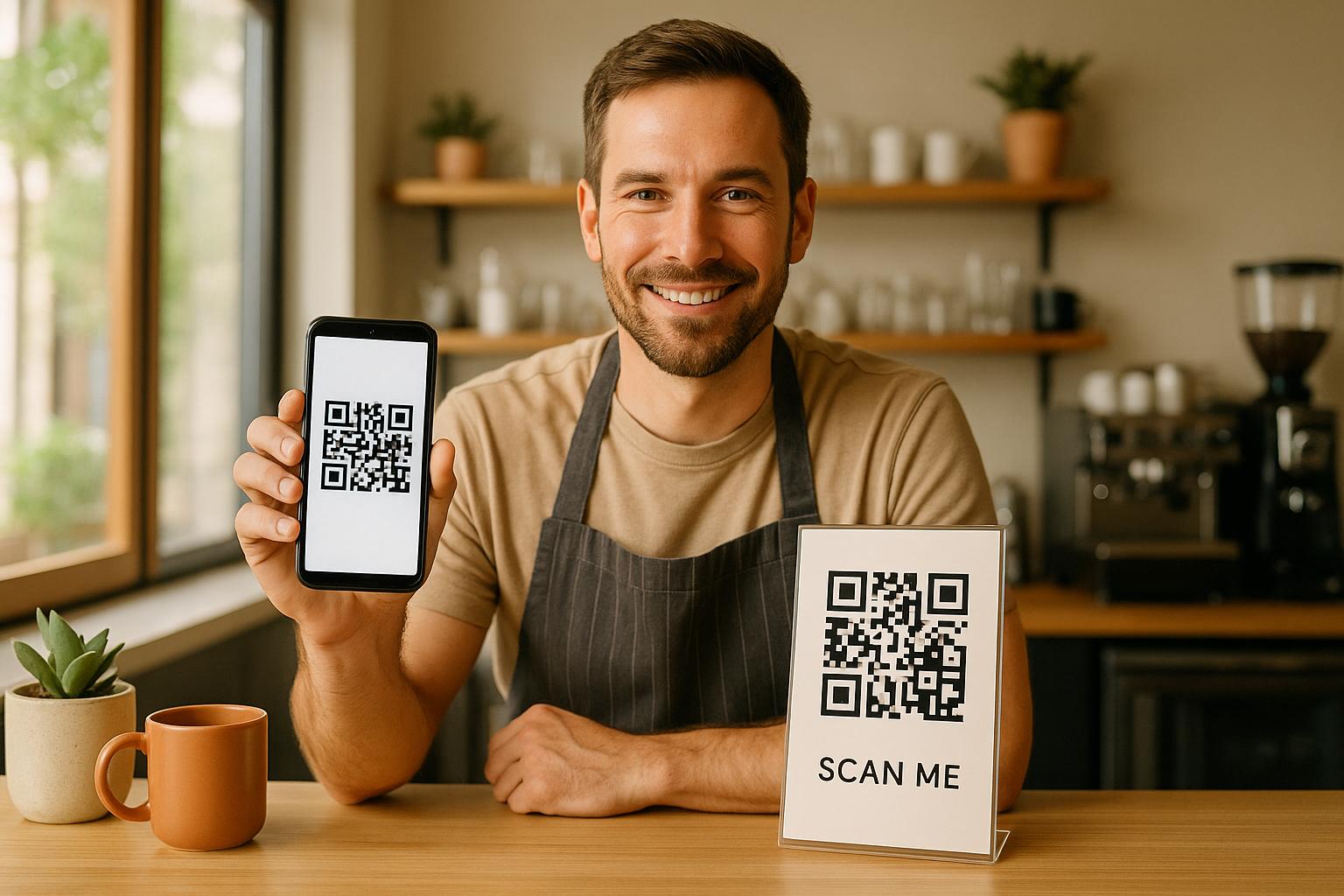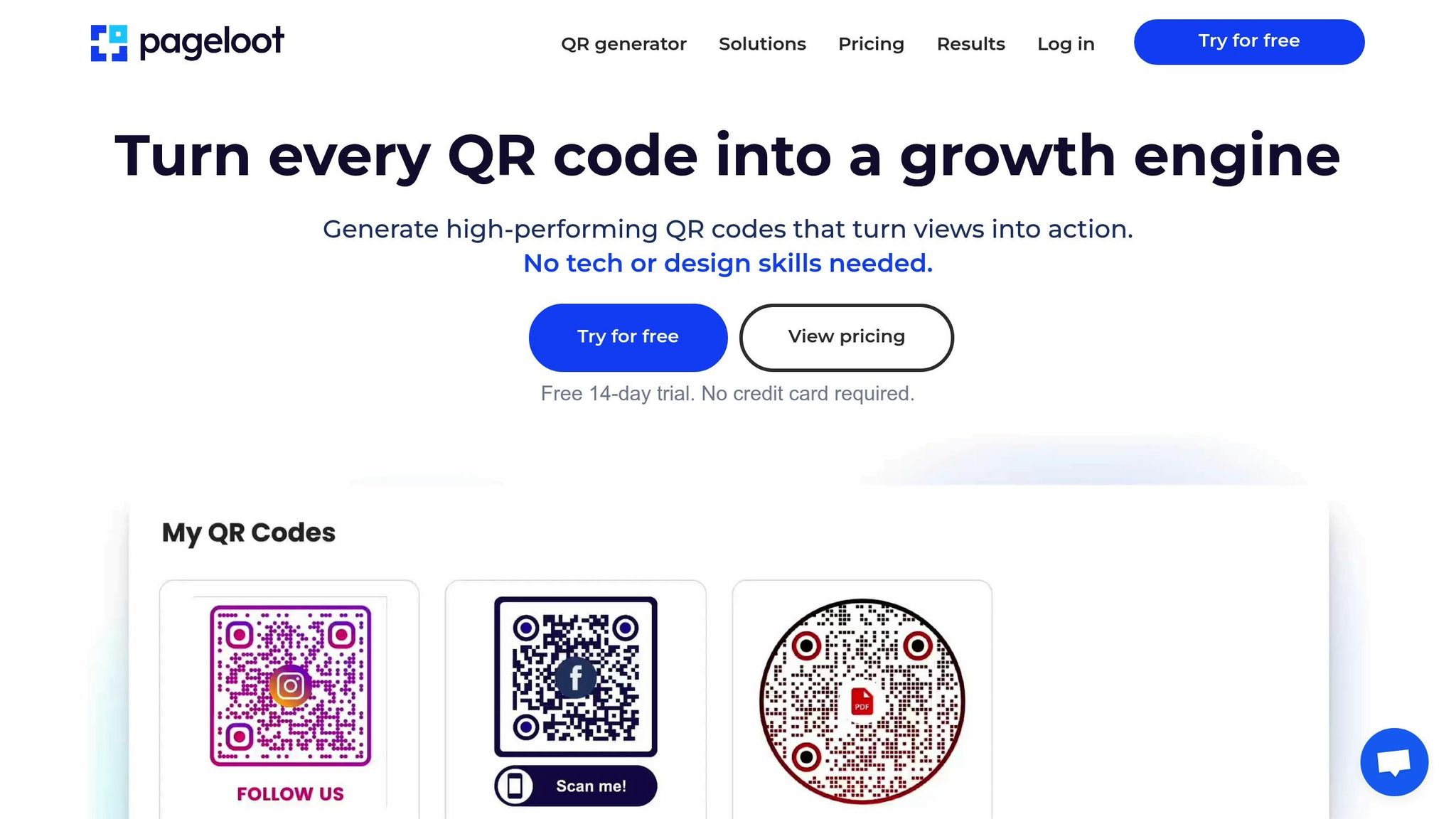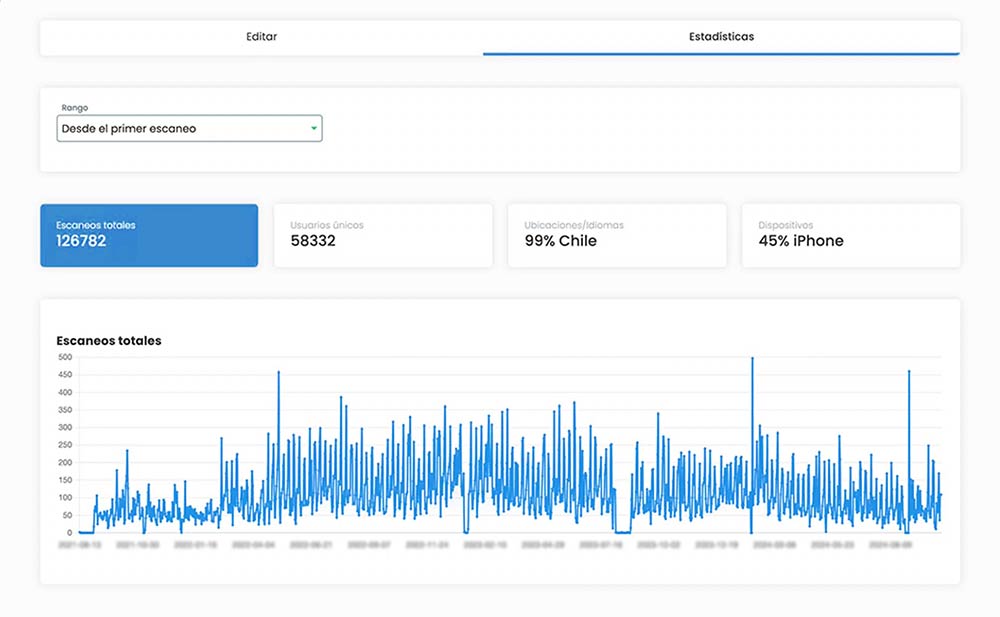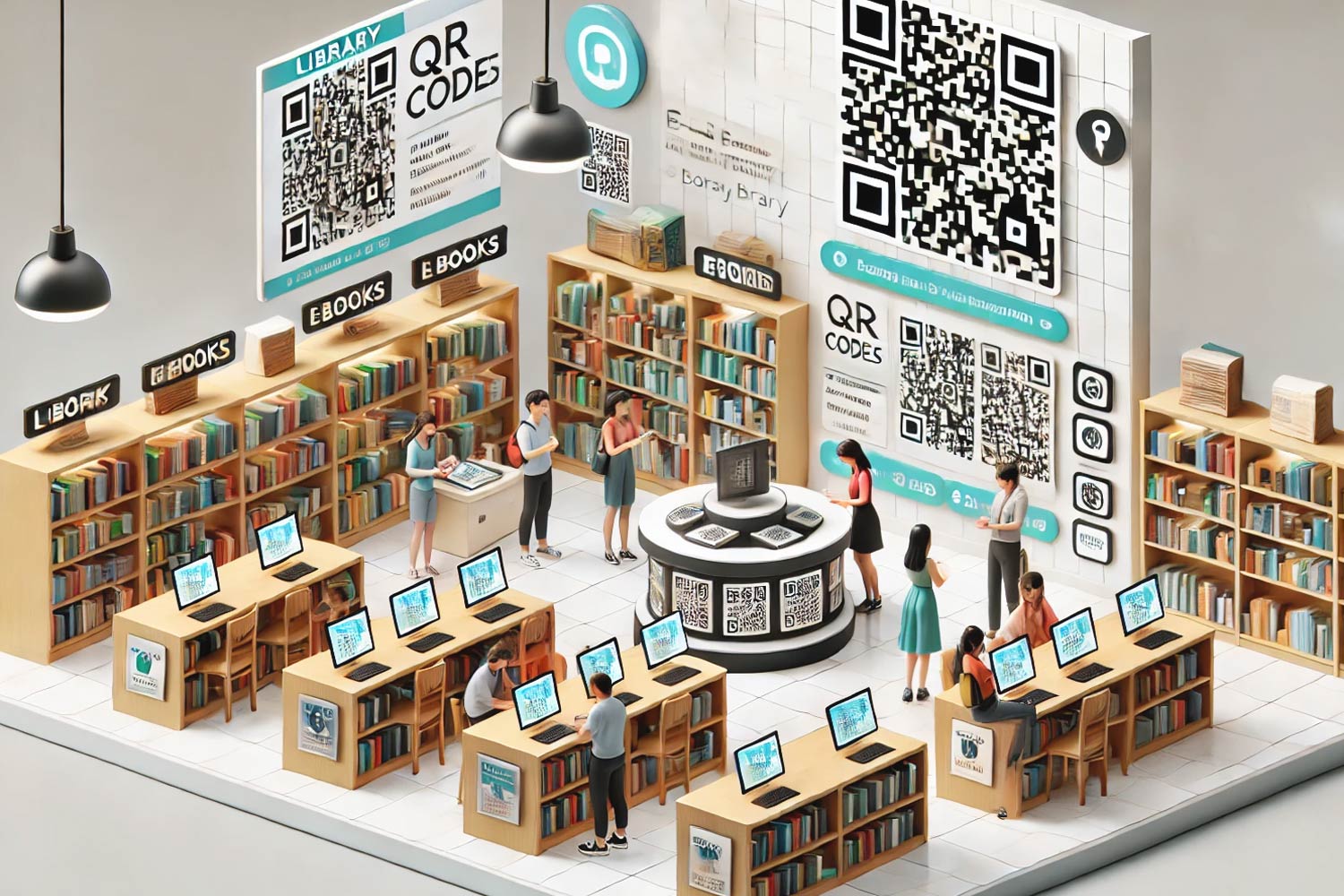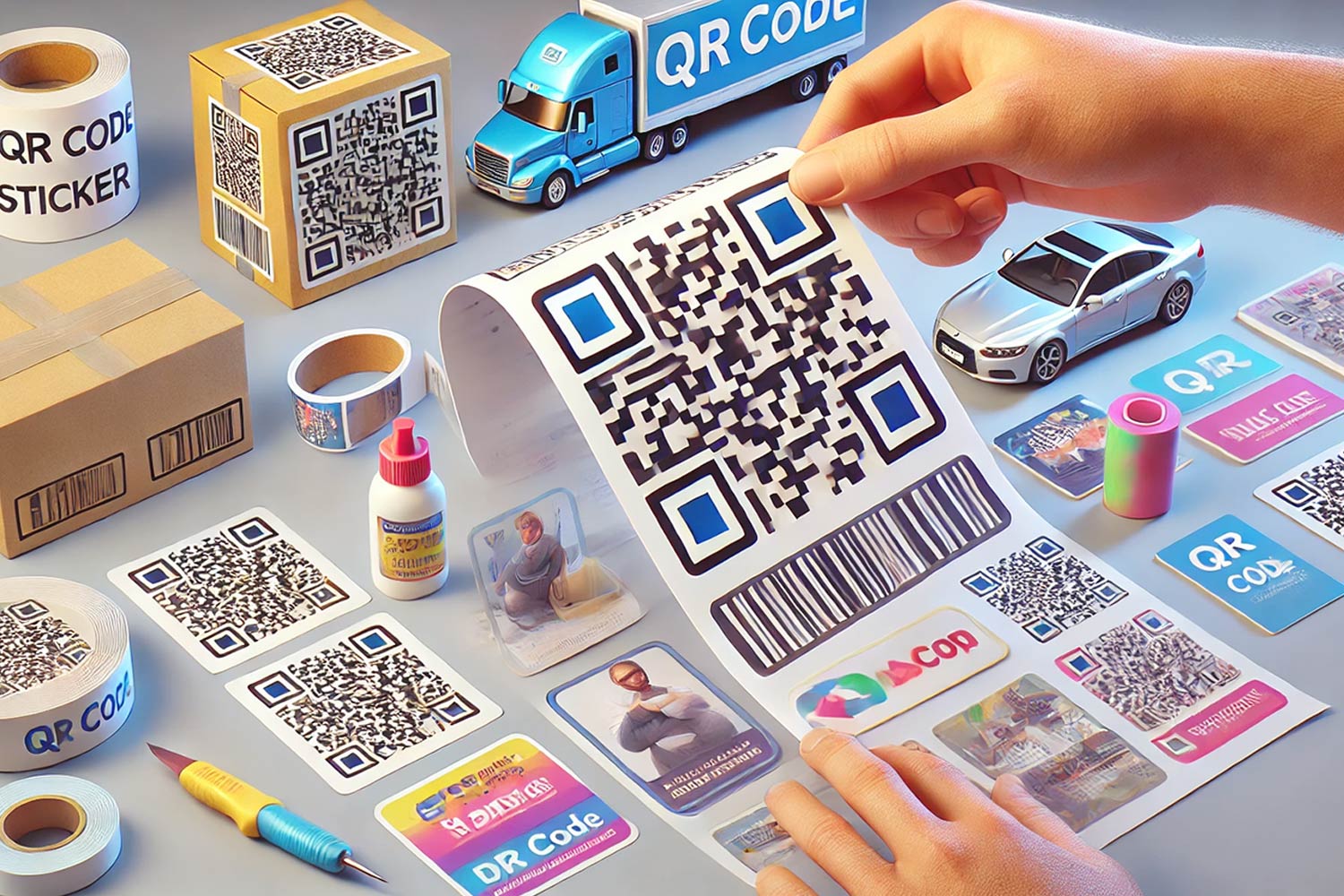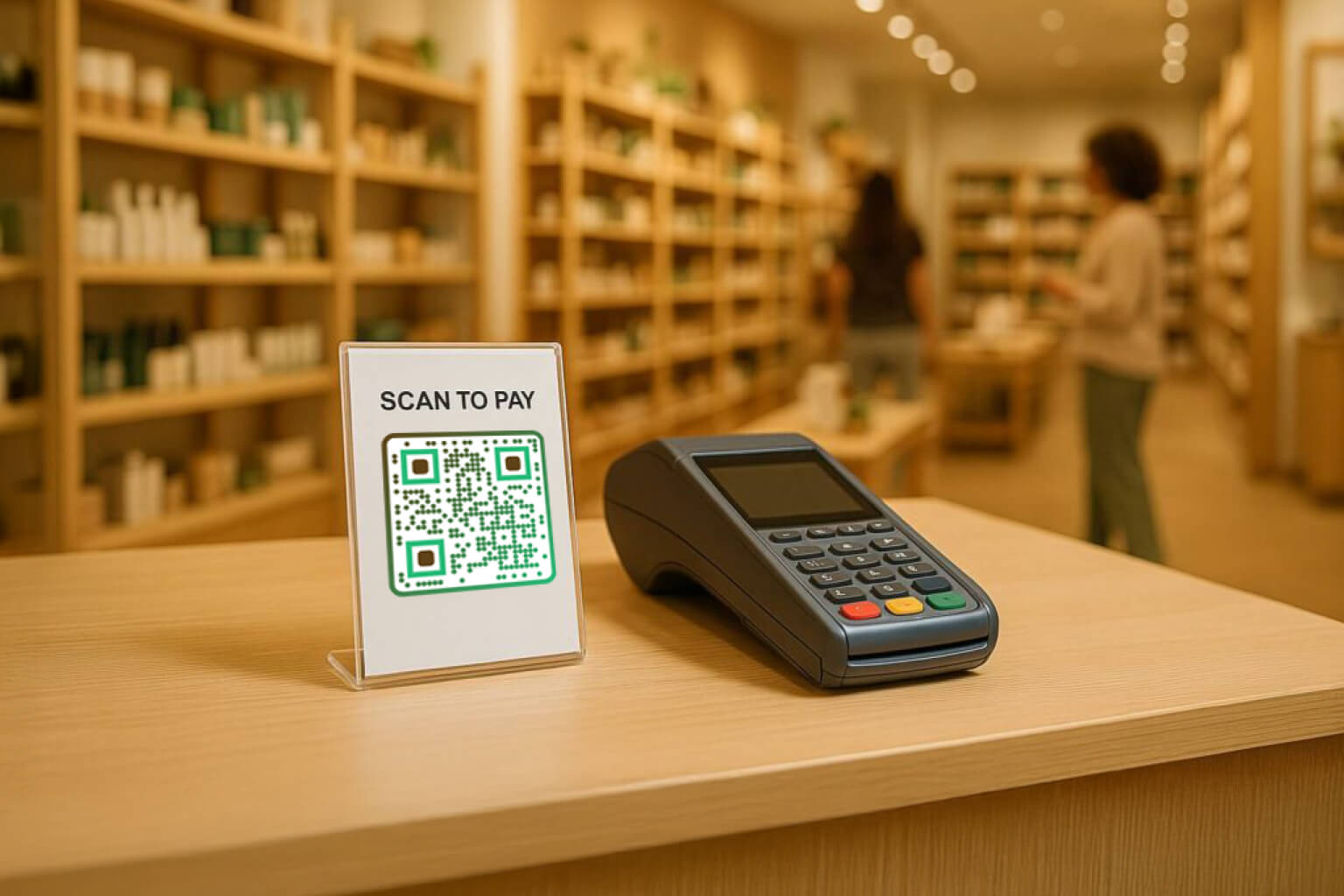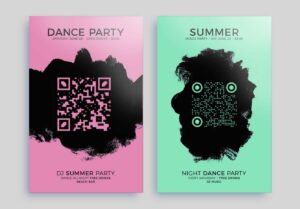QR codes are a simple, cost-effective way to connect your small business’s physical and digital marketing efforts. They let customers instantly access websites, promotions, or contact details by scanning a code with their smartphone camera. Here’s what you need to know:
- Why QR Codes Matter: They save money (e.g., replacing printed menus or manuals), boost customer engagement, and provide valuable tracking data.
- How to Create Them: Use tools like Pageloot to design QR codes for websites, social media, WiFi access, or documents. Customize them with your brand colors and logo for better recognition.
- Best Practices: Place QR codes on business cards, flyers, or packaging with clear instructions like “Scan for 20% Off.” Test them to ensure they work in real-world conditions.
- Track Performance: Use analytics to monitor scans, locations, and engagement. Dynamic QR codes let you update links without reprinting materials.
Start small, test what works, and scale up. QR codes are an easy way to boost your marketing and connect with customers wherever they are.
QR Code Marketing Strategies for Small Businesses 2025
Step-by-Step Guide to Creating QR Codes with Pageloot
Pageloot makes creating QR codes straightforward and efficient. With tools for designing dynamic QR codes at no cost, you can easily craft professional codes that align with your brand’s identity.
Getting Started with Pageloot
To begin, head over to Pageloot’s QR code generator. You can start creating codes immediately, no sign-up required. However, creating an account unlocks extra features like dynamic QR codes and a dashboard for tracking analytics.
Pageloot allows you to create, save, and even edit QR codes after printing. This is particularly helpful for small businesses that might need to update information without the hassle of reprinting materials.
The platform’s dashboard is designed for easy navigation, helping you manage creation, customization, and analytics efficiently. Once you’re in the generator, pick a QR code type that aligns with your specific marketing or business goals.
Choosing the Right QR Code Type
Pageloot offers over 25 QR code types, catering to various business needs. Here are some popular options for small businesses:
- URL QR codes: Direct users to your website or online platforms effortlessly.
- vCard QR codes: Store complete contact details. When scanned, these add your information directly to the user’s phone, eliminating the need for traditional business cards.
- WiFi QR codes: Allow customers to connect to your network instantly without needing to enter a password. Perfect for coffee shops, restaurants, and retail spaces.
- PDF QR codes: Share documents like menus, product catalogs, or manuals. Customers can always access the latest version by scanning the code.
- Social media QR codes: Link directly to your social profiles, making it easy for customers to follow and engage with your business online.
The key is to choose a QR code type that aligns with your goals. For example, to drive website traffic, a URL QR code is ideal. If you’re looking to grow your contact list, opt for a vCard QR code. Once you’ve selected the type, you can move on to personalizing it to match your brand.
Customizing QR Codes for Your Brand
While standard black-and-white QR codes get the job done, customized codes are far more effective in grabbing attention. By using contrasting colors and adding a logo (covering no more than 30% of the code), you can make your QR code not only functional but also visually appealing and instantly recognizable.
Color choices are important for both style and usability. For example, if your brand colors include light blue and white, ensure there’s enough contrast for smartphones to scan the code easily.
Incorporate call-to-action (CTA) frames with messages like "Scan Me" or "Get 20% Off" to provide context and encourage users to scan. These small additions can significantly boost engagement.
Always test your customized QR codes after making adjustments, especially if you’ve used complex color schemes or larger logos. Testing ensures the code scans reliably in real-world conditions.
Lastly, maintain a "quiet zone" or white space around the QR code. This empty area is crucial for ensuring the code is scannable, especially when placed on busy backgrounds or printed materials.
A thoughtfully designed QR code that reflects your brand can increase trust and scan rates, outperforming generic options. By combining functionality with aesthetics, you make your QR codes work harder for your business.
Best Practices for Using QR Codes in Marketing Campaigns
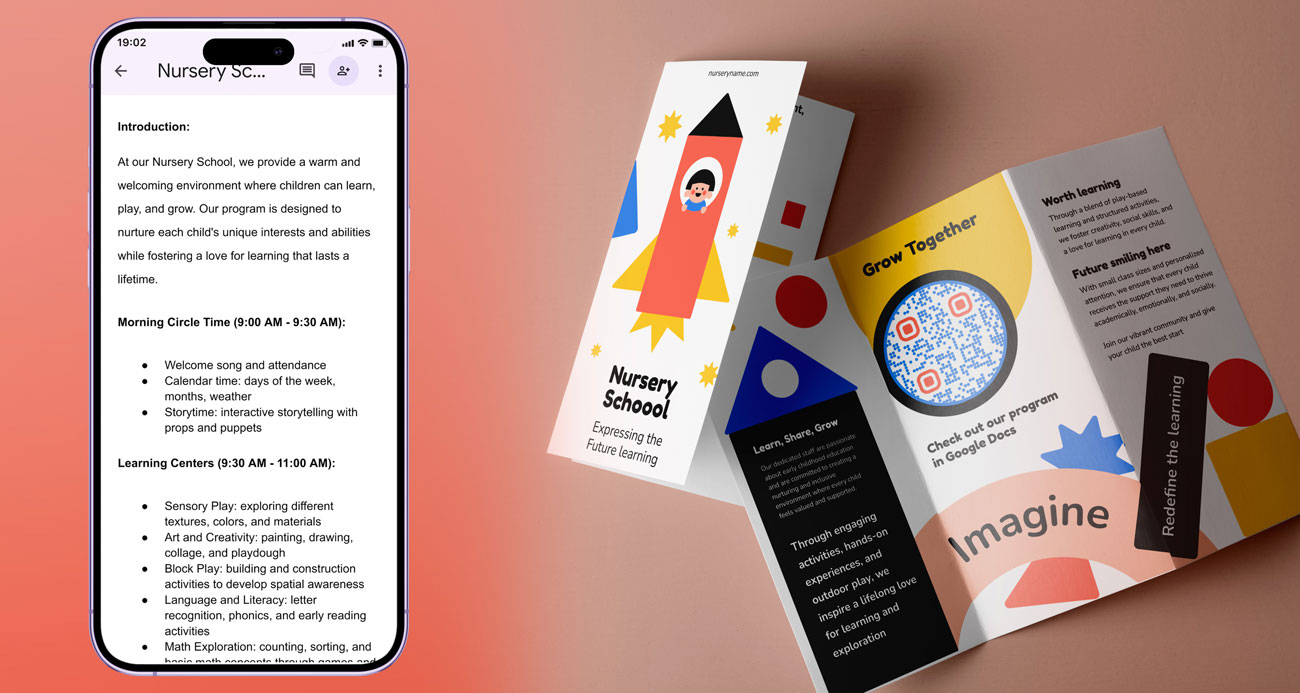 To get the most out of QR codes in your marketing efforts, focus on strategic placement and usability. The goal is to make scanning easy and rewarding for customers while ensuring these codes function seamlessly across both physical and digital platforms.
To get the most out of QR codes in your marketing efforts, focus on strategic placement and usability. The goal is to make scanning easy and rewarding for customers while ensuring these codes function seamlessly across both physical and digital platforms.
Using QR Codes in Print Materials
Print materials offer a way to bridge the gap between offline and online interactions. QR codes can be added to business cards, brochures, posters, or even product packaging to connect customers to digital experiences.
When using QR codes in print, size is crucial. A minimum size of 0.8" x 0.8" ensures reliable scanning, regardless of device or lighting conditions. Placement also matters – avoid putting codes in corners or areas that might be folded or hidden.
For example, QR codes on business cards allow customers to instantly save contact details without manual entry. Taco Bell demonstrated a creative use of QR codes during the 2012 launch of the Doritos Locos Taco. They placed codes on packaging that linked to exclusive video content, keeping customers engaged with the brand. Similarly, Waterfall Glen Soap Company uses dynamic QR codes on its packaging to share its brand story while minimizing physical packaging.
Adding clear instructions can make a big difference. Calls-to-action like "Scan for 20% Off" or "Get Directions" help guide customers and encourage interaction. Also, always test printed QR codes under different conditions to ensure they work as intended.
Adding QR Codes to Digital Campaigns
Digital platforms expand the reach and flexibility of QR codes. They’re especially effective in email marketing and social media, where tracking engagement and updating destinations is simple.
Email campaigns benefit greatly from QR codes. Considering email marketing delivers $36 for every dollar spent and is preferred by 73% of millennials for business communications, adding QR codes can amplify results. For instance, The Home Finders real estate agency used QR codes in emails, property signs, and storefront displays to boost attendance at property showings. Their codes linked to event details, registration forms, and calendar integrations.
Ensure the landing pages linked to your QR codes load quickly and are optimized for smartphones. Elle Boutique used QR codes in email campaigns to drive users to their mobile app, where conversion rates surpassed those on their desktop website.
Social media is another effective channel for QR codes. eGo Gaming Studios used App Store QR codes across emails, social media posts, and landing pages to direct desktop users to their mobile gaming app.
One of the biggest advantages of digital QR codes is their adaptability. Dynamic QR codes allow you to update destinations without changing the code itself, making it easy to adjust campaigns. A great example is Coinbase‘s Super Bowl ad, which featured a floating QR code. The ad directed viewers to their app and generated so much traffic that it temporarily crashed their system.
By combining these digital strategies with offline efforts, you can create a cohesive marketing approach.
Combining Offline and Online Marketing with QR Codes
Integrating print and digital QR code strategies ensures maximum engagement. With 83% of Americans having scanned a QR code at least once – and 72% doing so in the past month – the potential to connect physical and digital experiences is immense [13].
Consistency across all touchpoints is key. Whether customers encounter your QR code on a business card, storefront, or print ad, the linked destination should reflect the same branding and messaging. Brands like Amazon Go and Sephora have mastered this approach. Amazon Go, for instance, uses QR codes to streamline the shopping experience. Customers scan a code upon entering the store, and their purchases are automatically charged through a preloaded digital wallet. At Sephora’s Madrid flagship store, digital mirrors suggest products based on customer profiles, with QR codes enabling instant purchases.
Point-of-sale QR codes are another opportunity to engage customers. They can offer discounts, detailed product information, or loyalty program sign-ups. QR codes also enhance event marketing by directing users to registration pages, event schedules, or networking tools.
Strategic placement remains critical. Test your codes in various lighting conditions and at different distances to ensure they’re easy to scan. Tracking engagement across all channels will help you identify the most effective connections between offline and online efforts, allowing you to refine your strategy and maximize results.
sbb-itb-74874c9
Tracking and Improving QR Code Performance
If you want your QR codes to deliver results, you need to track how they’re performing. Skipping this step means missing out on ways to fine-tune your campaigns and boost engagement.
Understanding QR Code Analytics
QR code analytics let you dive into how people interact with your codes, offering insights that go beyond standard website analytics. You can track metrics like total scans, unique scans, location, device type, and scan timestamps. These details give you a clearer picture of when, where, and how users engage with your content – not just how many people scanned the code.
Take the M+ Museum in Hong Kong, for example. They used dynamic QR codes to link physical exhibits to digital content, racking up 148,000 total scans and engaging 113,000 visitors. HSBC UK also saw success, partnering with Shelter to promote bank accounts for the homeless. Their QR code campaign led to a 52% increase in new accounts within two weeks, with one in five scanners becoming regular donors.
For deeper insights, you can connect your QR code analytics with Google Analytics 4 (GA4) using UTM parameters. This integration helps you track what happens after someone scans – whether it’s a purchase, sign-up, or other conversion. Tools like Pageloot’s analytics dashboard make this process straightforward.
"The analytics on QR codes have been super easy to use and organize. Because of the campaign label function, it became effortless for us to go in and look for specific campaigns. Once the campaigns are sorted, we can begin seeing all the metrics tied into them." – Kinsey Akins, Programmatic Channel Manager, BBQ Guys
With these metrics in hand, you can experiment with A/B testing to improve your campaigns.
Improving Results with A/B Testing
A/B testing is a powerful way to figure out what works best with your QR codes. By comparing different design elements, messaging, placements, colors, or fonts, you can identify what drives more scans and conversions.
For instance, Flipkart ran A/B tests during their Big Billion Days campaign. They gamified QR codes in print and TV ads, leading to over 2 million scans and engaging 536,000 visitors. By tweaking their designs mid-campaign based on performance data, they boosted their scan-through rate by 15%.
Another example comes from a national retailer that tested two offers: "50% Off Clearance" versus "Buy One, Get One Free." The latter drove 20% more QR code scans and increased in-store traffic, prompting a mid-campaign switch across all their markets.
It’s worth noting that 84% of people are more likely to scan a QR code when the offer feels relevant to them. Customizing your codes with brand colors, logos, and frames can also increase scans by up to 80%.
Dynamic QR codes make it easy to adapt your campaigns based on these testing insights.
Dynamic QR Codes for Easy Updates
Dynamic QR codes give you the flexibility to update the destination URL even after printing. This means you can fix errors or adjust campaigns as you gather performance data.
Tourism New Brunswick used dynamic QR codes in direct mail flyers and TV ads, achieving a 1.77% engagement rate. Out of 209 users who landed on their main page, 80% continued to the contest page. The ability to update contest details and track performance across different channels proved invaluable.
Similarly, PatientPoint used dynamic QR codes on advertising panels in healthcare locations, resulting in over 270,000 scans and engaging 208,000 visitors across 2,300 sites.
To get the most out of dynamic QR codes, link them to mobile-friendly landing pages and test them thoroughly for broken links or redirect errors. Keep an eye on metrics like location, time, scan date, and click-through rates to refine your approach. Pageloot’s dynamic features simplify this process, helping you adapt campaigns on the fly.
Recent data shows that QR-linked content achieves 3–4× higher engagement rates than traditional outreach methods. Plus, 62% of businesses expect QR-focused strategies to boost sales by 2025. With 95% of companies reporting that QR codes help them collect valuable first-party data, it’s clear that dynamic codes and detailed analytics are essential tools for growing your business.
Conclusion: Getting Started with QR Codes for Small Business Growth
 QR codes are a powerful way to connect the physical and digital worlds, offering measurable results for businesses. With 99.5 million U.S. smartphone users expected to scan QR codes by 2025, and 45% of small businesses already using this technology in 2023, the time is right to include QR codes in your marketing strategy. Plus, over 45% of U.S. shoppers have interacted with marketing-related QR codes, making it clear that this tool is gaining traction.
QR codes are a powerful way to connect the physical and digital worlds, offering measurable results for businesses. With 99.5 million U.S. smartphone users expected to scan QR codes by 2025, and 45% of small businesses already using this technology in 2023, the time is right to include QR codes in your marketing strategy. Plus, over 45% of U.S. shoppers have interacted with marketing-related QR codes, making it clear that this tool is gaining traction.
Younger consumers are at the forefront of this trend – 54% of shoppers aged 18–29 have used marketing QR codes. On top of that, 38% of customers prefer businesses that use convenient tools like QR codes, giving early adopters a competitive edge. And since 70% of consumers enjoy receiving coupons and 68% believe coupons encourage loyalty, QR codes are an ideal way to deliver promotions and build stronger customer relationships.
Getting started with QR codes doesn’t have to be complicated. Use them to link physical materials – like flyers, receipts, or packaging – to digital experiences that offer real value. Whether it’s driving traffic to a special deal, encouraging app downloads, or gathering customer feedback, the goal is to make scanning worthwhile for your audience.
Tools like Pageloot simplify the process. Known for its 4.8/5 star rating and intuitive design, Pageloot allows you to start with basic static QR codes and progress to dynamic ones as your business grows. Features like real-time analytics and customization ensure you can track results and maintain a consistent brand image. The analytics capabilities we’ve discussed earlier make it clear how effective QR code campaigns can be.
"Leveraging QR codes now can help simplify customer interactions, boost engagement and ensure your business thrives."
– Kushal Tantry, CEO of QR Code Developer
The best QR code campaigns are built on clear calls-to-action, optimized landing pages, and consistent performance tracking. Start small – perhaps with one or two campaigns – test what resonates with your audience, and scale up from there. With nearly 50% of people worldwide easily able to scan QR codes, this technology is accessible and ready to help your business grow.
Considering that customers spend an average of three hours daily on their smartphones, with 69% researching products and 69.4% shopping on mobile devices, QR codes make it easier than ever for them to engage with your business whenever and wherever they choose.
FAQs
How can small businesses use QR codes to boost their marketing efforts?
Small businesses can tap into the power of QR codes to engage customers and elevate their marketing efforts in both creative and practical ways. By adding QR codes to product packaging, business cards, flyers, or store signage, they can guide customers to digital content such as exclusive discounts, how-to videos, or customer reviews. This bridges the gap between the physical and digital worlds, making interactions smoother and more engaging.
Beyond convenience, QR codes offer valuable data through analytics. They let businesses track how many people are scanning their codes, providing real-time insights to refine marketing strategies. With smart placement and eye-catching designs, QR codes can strengthen customer relationships and boost the effectiveness of marketing campaigns.
What are the advantages of using dynamic QR codes instead of static ones for small business marketing?
Dynamic QR codes bring more flexibility and functionality to the table compared to static ones, making them a smart choice for small business marketing. One of their standout features is the ability to update the linked content in real time. This means businesses can tweak links or refresh content without having to generate a new code, saving time and resources.
Another key advantage is their tracking and analytics capabilities. Dynamic QR codes can collect valuable data, such as where and when scans happen and what type of device was used. This data helps businesses gauge the success of their campaigns and fine-tune their strategies. Plus, they support retargeting, making it easier to reconnect with potential customers across different platforms.
Dynamic QR codes are incredibly versatile, too. They can link to just about anything – websites, videos, special offers, or other promotional content. This makes them a powerful tool for bridging the gap between digital and physical marketing efforts. Whether you’re running an online campaign or enhancing in-store promotions, dynamic QR codes offer a practical and efficient way to engage your audience.
How can small businesses design QR codes that are both attractive and easy to scan?
To make QR codes both attractive and easy to scan, small businesses should keep a few design tips in mind. First, incorporate colors and branding elements that reflect your business identity, but ensure the code has strong contrast with its background – dark codes on light backgrounds are the easiest to scan. Avoid using inverted colors, as they can interfere with scannability.
You can also add a logo or small image in the center of the QR code to grab attention without compromising its functionality. Just make sure the design remains simple, as overly intricate patterns can confuse scanning apps. Lastly, include a clear call-to-action nearby, like "Scan to get 10% off!" and place the QR code in a visible, high-traffic area to maximize engagement.

